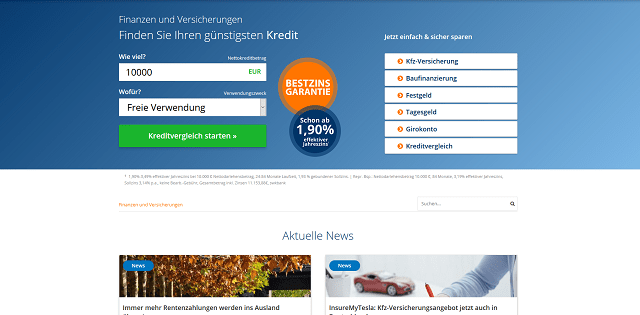Uncovering Unsold Modular and Prefab Homes: A Guide to Hidden Opportunities
Uncovering unsold modular and prefab homes offers a fresh look at modern housing opportunities. These often-overlooked options highlight the growing appeal of prefabricated living — where design, efficiency, and innovation meet affordability. Discover how these ready-to-move homes are changing the way people think about homeownership and why many see them as a smart alternative for the future.

The housing landscape is changing rapidly as innovative construction methods gain traction across the UK. Modular and prefabricated homes—built in controlled factory environments before being transported to their final locations—are increasingly recognized as viable alternatives to traditional construction. For savvy homebuyers, the market for unsold or surplus prefab homes presents an intriguing opportunity that combines potential cost savings with modern design and efficiency benefits.
Introduction to Modular and Prefab Homes
Modular and prefabricated homes represent a fundamental shift in residential construction methodology. Unlike conventional site-built homes, these dwellings are manufactured in sections (modules) within climate-controlled facilities, then transported to their permanent sites for assembly. This approach offers numerous advantages, including quality control, reduced construction waste, and significantly shorter build times—often 50-60% faster than traditional methods.
The manufacturing process typically involves creating standardized components or complete room modules that are precision-engineered to meet or exceed the same building codes as conventional construction. Materials range from timber frames to steel structures, with various cladding options available to suit different aesthetic preferences and environmental conditions.
The Growing Appeal of Prefabricated Living
The popularity of prefabricated homes has surged in recent years, driven by several compelling factors. Environmental consciousness plays a significant role, as factory construction typically generates less waste and can incorporate sustainable materials more efficiently. Energy performance is another key benefit—many modern prefab homes feature advanced insulation systems and energy-efficient designs that can substantially reduce utility costs over time.
Demographic shifts have also contributed to increased interest in prefabricated housing. Younger homebuyers often appreciate the contemporary designs and technological integration common in many prefab offerings. Additionally, the housing affordability crisis has prompted many to consider alternatives to traditional construction, with prefab options frequently offering more predictable costs and shorter waiting periods between purchase and occupancy.
Exploring the Market for Unsold Modular and Prefab Homes
The existence of unsold inventory in the prefabricated housing sector creates unique opportunities for prospective buyers. These homes may become available through various channels: manufacturer display models, canceled orders, overproduction, or developer surplus from larger projects. In many cases, these homes represent significant value, as manufacturers and developers may offer competitive pricing to clear inventory and recover costs.
Finding these opportunities requires a strategic approach. Direct contact with manufacturers can reveal canceled orders or display homes available at discounted rates. Specialized real estate agents with knowledge of the prefab market can provide valuable guidance. Online platforms dedicated to prefabricated housing have also emerged, creating marketplaces where buyers can discover available inventory across multiple manufacturers and regions.
Challenges and Considerations in Modular Homeownership
While the benefits of purchasing unsold modular homes are substantial, buyers should approach these opportunities with careful consideration of several factors. Land acquisition and preparation represent significant challenges—unlike traditional home purchases, prefab buyers often need to secure suitable land separately and ensure it meets the necessary requirements for installation, including access for delivery vehicles and appropriate utility connections.
Financing can present another hurdle, as some lenders remain unfamiliar with prefabricated construction. However, as the market has matured, more financial institutions have developed specific products for modular home purchases. Prospective buyers should research lenders experienced with prefab construction to secure appropriate financing options.
Transportation logistics and potential customization limitations also warrant consideration. The cost of transporting modules from factory to site can be substantial, particularly for remote locations. Additionally, while some degree of customization is typically possible, buyers of pre-manufactured unsold inventory may have limited options for altering designs or specifications.
Market Analysis: Prefab Home Providers and Pricing
The UK prefabricated housing market features several established manufacturers offering diverse product ranges. Understanding the typical pricing structure and available options can help buyers make informed decisions when exploring unsold inventory opportunities.
| Manufacturer | Home Type | Typical Price Range | Key Features |
|---|---|---|---|
| Huf Haus | Luxury Modular | £500,000 - £1,000,000+ | German engineering, glass facades, energy efficiency |
| Baufritz | Eco-friendly Modular | £300,000 - £600,000 | Organic materials, allergy-friendly design, sustainability |
| Ilke Homes | Affordable Modular | £150,000 - £250,000 | Energy-efficient, rapid construction, modern designs |
| Urban Splash | Contemporary Modular | £200,000 - £400,000 | Customizable layouts, urban-focused design, modern aesthetics |
| Haus UK | Entry-level Prefab | £100,000 - £200,000 | Compact designs, starter homes, simplified options |
Prices, rates, or cost estimates mentioned in this article are based on the latest available information but may change over time. Independent research is advised before making financial decisions.
When exploring unsold inventory, buyers may find opportunities at 10-25% below these standard price points, particularly for display models or canceled orders that manufacturers are motivated to move quickly. However, these savings should be balanced against potential additional costs for transportation, site preparation, and any necessary modifications.
Conclusion: Embracing Modern Housing Opportunities
The market for unsold modular and prefabricated homes represents a compelling opportunity for homebuyers willing to explore alternatives to conventional construction. With potential cost savings, environmental benefits, and accelerated timelines, these factory-built dwellings offer practical solutions to many contemporary housing challenges. By understanding the unique considerations involved—from land acquisition to financing and transportation logistics—prospective buyers can navigate this specialized market segment effectively.
As prefabricated construction continues to evolve and gain mainstream acceptance, the opportunities in this sector are likely to expand. For those willing to embrace innovation in housing, unsold modular inventory may provide an accessible entry point to high-quality, efficient, and forward-thinking homeownership.




